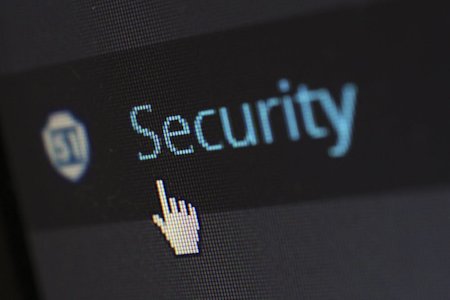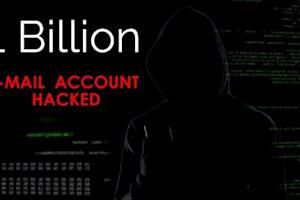In today's interconnected digital landscape, the importance of cybersecurity cannot be overstated. As businesses and individuals increasingly rely on technology to manage sensitive information, conduct transactions, and communicate, the need for robust cybersecurity measures has become paramount.
Cybersecurity encompasses the strategies, technologies, and practices designed to protect systems, networks, and data from cyber threats, including hacking, data breaches, and other forms of cybercrime. As these threats evolve in complexity and scale, staying informed about cybersecurity and implementing best practices is crucial for safeguarding both personal and organizational assets.
In this blog, we'll explore the critical aspects of cybersecurity, its significance in the modern world, and the best practices to mitigate the risks associated with cyber threats.
Cybersecurity Today: Why Does It Matter?
The rapid adoption of cloud computing, IoT devices, and remote work environments has expanded the attack surface for cybercriminals, making robust cybersecurity measures more essential than ever. Understanding why cybersecurity matters in today's world requires an examination of its evolution, its critical role in protecting assets, and the significant consequences of neglecting it.
Cybersecurity: Meaning & Definition
Cybersecurity is the practice of protecting systems, networks, and data from cyber threats, including hacking, malware, and unauthorized access. It involves implementing security measures such as encryption, firewalls, multi-factor authentication, and threat monitoring to safeguard sensitive information.
The Evolution and Growth of Cybersecurity
Cybersecurity has come a long way since the early days of the internet, where basic firewalls and antivirus software were sufficient to protect against the limited threats of the time. However, as technology advanced, so did the sophistication of cyberattacks. Today, cyber threats range from simple phishing scams to complex ransomware attacks and state-sponsored cyber espionage. This evolution has driven the need for more advanced and layered cybersecurity strategies, including encryption, multi-factor authentication, and AI-driven threat detection.
The growth of cybersecurity is also reflected in the increasing number of regulations and standards being implemented worldwide. Frameworks like GDPR, HIPAA, and CCPA have set stringent requirements for data protection, compelling organizations to adopt stronger cybersecurity practices. As cyber threats continue to evolve, the cybersecurity industry is expected to grow, with new technologies and approaches constantly emerging to stay ahead of potential attackers.
Why is Cybersecurity Important?
Cybersecurity is crucial for several reasons, the most obvious being the protection of sensitive data. In today's digital world, vast amounts of personal, financial, and business data are stored online. Cybersecurity measures help protect this data from unauthorized access, ensuring that it remains confidential and integral.
Beyond data protection, cybersecurity is vital for maintaining the functionality of critical infrastructure. From power grids to healthcare systems, many essential services rely on digital systems that could be disrupted by cyberattacks. A robust cybersecurity posture helps safeguard these systems, ensuring that they remain operational even in the face of potential threats.
Moreover, strong cybersecurity practices build trust. For businesses, demonstrating a commitment to cybersecurity can enhance reputation and customer confidence, which is particularly important in industries such as finance, healthcare, and e-commerce. In contrast, a lack of adequate cybersecurity can lead to breaches that damage reputation, result in financial losses, and even lead to legal consequences.
The High Cost of Weak Cybersecurity
The cost of weak cybersecurity is staggering and can manifest in various forms. Financially, the direct impact of a cyberattack can include ransom payments, loss of revenue, and the cost of responding to and recovering from the attack. For instance, the global cost of cybercrime is projected to reach $10.5 trillion annually by 2025, highlighting the financial risks involved.
However, the financial toll is just the tip of the iceberg. Weak cybersecurity can also lead to significant reputational damage. Businesses that suffer data breaches often lose customer trust, which can be difficult, if not impossible, to rebuild. This loss of trust can result in customer attrition, reduced market share, and long-term brand damage.
Furthermore, there are legal and regulatory consequences to consider. Data breaches often trigger investigations and fines from regulatory bodies, particularly if the organization is found to be non-compliant with data protection laws. In some cases, businesses may also face lawsuits from affected customers, leading to further financial and reputational harm.
Different Types of Cybersecurity
Cybersecurity encompasses various domains, each addressing specific threats and vulnerabilities. Understanding these different types helps organizations implement a comprehensive security strategy.
Network Security: Protects networks from unauthorized access, cyberattacks, and data breaches through firewalls, intrusion detection systems (IDS), and secure access controls.
Endpoint Security: Secures individual devices such as computers, mobile phones, and IoT devices from malware, ransomware, and unauthorized access.
Cloud Security: Ensures the protection of cloud-based data, applications, and infrastructure through encryption, identity management, and secure access controls.
Application Security: Focuses on securing software and applications by identifying vulnerabilities and implementing security protocols like authentication and encryption.
Information Security: Safeguards sensitive data from breaches and leaks through encryption, access controls, and compliance with regulatory standards.
Mobile Security: Protects mobile devices and applications from threats such as phishing, malware, and unauthorized access.
Internet of Things (IoT) Security: Secures connected devices and IoT networks from cyber threats that could compromise data integrity and system functionality.
Zero Trust: Implements a security framework where no user or device is trusted by default, requiring continuous authentication and strict access controls.
Exploring the Various Cybersecurity Threats Businesses Face
Cybersecurity threats are constantly evolving, driven by advances in technology and the increasing sophistication of cybercriminals. Understanding the different types of cybersecurity threats is crucial for businesses to effectively protect themselves and mitigate risks. Below are some of the most common and dangerous cybersecurity threats that businesses face today.
1. Phishing Attacks
Phishing attacks are one of the most prevalent and damaging forms of cyber threats. These attacks involve cybercriminals sending fraudulent emails or messages that appear to come from legitimate sources, such as trusted companies or colleagues. The goal is to trick recipients into revealing sensitive information, such as passwords, credit card numbers, or other personal data.
Phishing attacks can also involve malicious links or attachments that, when clicked or opened, install malware on the victim’s device. Despite increasing awareness, phishing remains a significant threat due to its ability to exploit human psychology and its ever-evolving tactics.
2. Ransomware
Ransomware is a type of malicious software designed to encrypt a victim’s data and demand a ransom in exchange for the decryption key. Ransomware attacks have become increasingly common and can target businesses of all sizes.
The impact of a successful ransomware attack can be devastating, leading to significant operational downtime, financial loss, and potential data breaches if sensitive information is stolen before encryption. Many businesses face the difficult decision of whether to pay the ransom, which doesn’t guarantee the recovery of their data, or risk losing access to critical information permanently.
3. Insider Threats
Insider threats involve individuals within an organization—such as employees, contractors, or business partners—who intentionally or unintentionally compromise security. These threats can be particularly challenging to detect and mitigate because they come from trusted individuals with legitimate access to the organization’s systems and data.
Insider threats can involve the theft of sensitive information, sabotage of systems, or accidental data breaches due to negligence. The impact of insider threats can be significant, as they often result in the loss of proprietary information, financial damage, and regulatory penalties.
4. Distributed Denial of Service (DDoS) Attacks
A Distributed Denial of Service (DDoS) attack occurs when multiple compromised systems are used to flood a target—typically a web server or network—with a massive amount of traffic, overwhelming the system and causing it to become slow or completely unavailable. DDoS attacks can be highly disruptive, leading to prolonged downtime and loss of revenue.
These attacks are often used as a smokescreen to distract from other malicious activities, such as data breaches, or as a means of extortion, where attackers demand payment to stop the attack.
5. Malware
Malware is a broad category of malicious software that includes viruses, worms, trojans, and spyware. Malware can infect a system through various vectors, such as phishing emails, malicious websites, or compromised software.
Once installed, malware can perform a range of harmful actions, including stealing sensitive information, encrypting data, spying on users, or taking control of the infected system. The impact of malware can be severe, leading to data breaches, financial loss, and disruption of business operations.
6. Advanced Persistent Threats (APTs)
Advanced Persistent Threats (APTs) are highly targeted and prolonged cyberattacks carried out by well-funded and skilled cybercriminals, often with the backing of nation-states. APTs typically target large organizations, government agencies, or critical infrastructure.
Unlike traditional cyberattacks, APTs are designed to remain undetected for extended periods, allowing attackers to gather sensitive information or cause significant damage over time. The stealthy nature of APTs makes them particularly dangerous, as they can compromise an organization’s security without being detected for months or even years.
7. Zero-Day Exploits
Zero-day exploits are attacks that target vulnerabilities in software or hardware that are unknown to the vendor or have not yet been patched. These exploits are highly valuable to cybercriminals because they can be used to compromise systems before security measures are put in place.
Zero-day attacks are often used in conjunction with other types of malware or as part of larger cyber espionage campaigns. Because zero-day vulnerabilities are unknown, they are extremely difficult to defend against, making them a significant threat to businesses.
8. Social Engineering
Social engineering involves manipulating individuals into divulging confidential information or performing actions that compromise security. This type of attack preys on human psychology rather than technical vulnerabilities, making it particularly challenging to defend against.
Social engineering attacks can take many forms, including phishing, pretexting, baiting, and tailgating. The success of these attacks often depends on the attacker’s ability to exploit trust, fear, or a sense of urgency, making them a persistent threat to businesses.
Best Practices for Managing and Mitigating Cybersecurity Threats
In an increasingly digital world, businesses must adopt robust cybersecurity measures to protect their systems, data, and networks from a wide range of cyber threats. Implementing best practices for cybersecurity can help organizations reduce their risk exposure and minimize the potential impact of cyberattacks. Below are some of the most effective strategies and practices that businesses can implement to mitigate cybersecurity threats.
1. Regularly Update and Patch Software
One of the simplest yet most effective cybersecurity practices is to ensure that all software and systems are regularly updated and patched. Cybercriminals often exploit known vulnerabilities in outdated software to gain unauthorized access to systems. By keeping software up-to-date and applying security patches as soon as they are released, businesses can close these vulnerabilities and reduce the risk of exploitation.
2. Implement Strong Access Controls
Access control is a critical component of any cybersecurity strategy. Businesses should enforce the principle of least privilege, ensuring that users have access only to the systems and data necessary for their roles. Implementing multi-factor authentication (MFA) adds an extra layer of security by requiring users to provide multiple forms of verification before gaining access. Additionally, regularly reviewing and updating access permissions can help prevent unauthorized access and reduce the risk of insider threats.
3. Conduct Regular Security Audits and Assessments
Regular security audits and assessments are essential for identifying and addressing potential vulnerabilities before they can be exploited. These audits should include a thorough review of the organization’s cybersecurity policies, practices, and infrastructure. Vulnerability assessments, penetration testing, and risk assessments can help businesses identify weak points in their security posture and prioritize remediation efforts. Continuous monitoring of networks and systems is also crucial for detecting and responding to potential threats in real time.
4. Train Employees on Cybersecurity Awareness
Human error is one of the leading causes of cybersecurity incidents, making employee training a vital aspect of any cybersecurity strategy. Businesses should regularly conduct cybersecurity awareness training to educate employees about common threats, such as phishing, social engineering, and ransomware.
Training should also cover best practices for safe online behavior, such as recognizing suspicious emails, using strong passwords, and avoiding risky websites. By fostering a culture of cybersecurity awareness, businesses can significantly reduce the risk of human-related security breaches.
5. Implement Data Encryption
Data encryption is a critical practice for protecting sensitive information, both at rest and in transit. Encryption converts data into a secure code that can only be decrypted by authorized parties, making it much more difficult for cybercriminals to access and exploit the information. Businesses should implement strong encryption protocols for all sensitive data, including customer information, financial records, and proprietary business data.
6. Establish an Incident Response Plan
Despite the best preventative measures, cyber incidents can still occur, making it essential for businesses to have a well-defined incident response plan in place. This plan should outline the steps to be taken in the event of a cyberattack, including containment, eradication, recovery, and communication procedures.
Having a clear incident response plan allows businesses to respond quickly and effectively to security breaches, minimizing damage and reducing downtime. Regularly testing and updating the incident response plan ensures that it remains effective as the threat landscape evolves.
7. Backup Data Regularly
Regular data backups are a crucial safeguard against data loss due to cyberattacks, such as ransomware, as well as other incidents like hardware failure or accidental deletion. Businesses should implement automated backup procedures that regularly store copies of critical data in secure, offsite locations.
Additionally, it’s important to test backups periodically to ensure that data can be restored quickly and effectively in the event of a disaster. Having reliable backups can significantly reduce the impact of a cyberattack and speed up the recovery process.
8. Use Advanced Threat Detection Tools
As cyber threats become more sophisticated, traditional security measures may not be enough to detect and prevent attacks. Businesses should consider implementing advanced threat detection tools, such as intrusion detection systems (IDS), endpoint detection and response (EDR) solutions, and Security Information and Event Management (SIEM) platforms.
These tools use advanced analytics, machine learning, and automation to detect and respond to threats in real time, providing an additional layer of defense against cyberattacks.
9. Secure Remote Access
With the rise of remote work, securing remote access to corporate systems and data has become increasingly important. Businesses should implement secure remote access solutions with strong encryption and multi-factor authentication.
Additionally, endpoint security for remote devices should be enhanced to protect against threats like malware and unauthorized access. Regularly monitoring and auditing remote access activity can help identify and address potential security issues before they escalate.
10. Develop a Cybersecurity Culture
Finally, building a strong cybersecurity culture within the organization is key to sustaining long-term protection against cyber threats. This involves integrating cybersecurity into every aspect of the business, from executive decision-making to daily operations. Leadership should prioritize cybersecurity, allocate appropriate resources, and communicate the importance of security to all employees.
Encouraging open communication about cybersecurity concerns and continuously reinforcing best practices can help create a security-conscious environment that proactively addresses threats.
Securing Distributed Work Environments: Cybersecurity for Modern Collaboration
The shift towards distributed work environments, driven by the rise of remote work and global collaboration, has transformed how businesses operate. As employees access corporate networks and data from various locations and devices, the potential for security breaches increases. Securing these distributed work environments is critical to maintaining the integrity of business operations and protecting sensitive information.
The Need for Secure Remote Access
In a distributed work environment, employees often need to access company resources from outside the traditional office setting. This remote access can expose networks to a variety of risks, including unauthorized access, data interception, and malware infiltration. Without robust security measures, these vulnerabilities can be exploited by cybercriminals, leading to data breaches, financial losses, and reputational damage.
Secure remote access solutions are essential for mitigating these risks. These solutions provide employees with safe, encrypted connections to corporate networks, ensuring that data remains protected even when accessed remotely. By implementing strong authentication protocols and endpoint security, businesses can control who has access to their systems and monitor remote access activity to detect and respond to potential threats.
Cybersecurity-Driven Remote Access: How Splashtop Secures Distributed Workforces
Splashtop is a leading provider of remote access and support solutions designed to meet the unique security needs of distributed work environments. With Splashtop, businesses can offer their employees seamless and secure access to workstations, servers, and applications from any device, anywhere in the world. Here’s how Splashtop helps secure distributed work environments:
High-Level Encryption: Splashtop uses industry-standard AES 256-bit encryption to protect all remote sessions. This ensures that data transmitted between the user’s device and the corporate network is secure and cannot be intercepted by unauthorized parties.
Multi-Factor Authentication: To enhance security, Splashtop supports multi-factor authentication, adding an extra layer of protection. Even if a user’s login credentials are compromised, MFA helps prevent unauthorized access by requiring additional verification.
Granular Access Controls: Splashtop allows administrators to set detailed access controls, ensuring that employees can only access the resources necessary for their roles. This minimizes the risk of insider threats and unauthorized data access.
Endpoint Security: Splashtop provides robust endpoint protection, ensuring that remote devices connecting to the corporate network are secure and free from malware. This is crucial in preventing compromised devices from becoming entry points for cyberattacks.
Real-Time Monitoring and Logging: With Splashtop, businesses can monitor remote access sessions in real time and maintain detailed logs of all activities. This capability allows for quick detection of suspicious behavior and supports compliance with regulatory requirements.
Scalability and Flexibility: Splashtop’s solutions are highly scalable, making them suitable for businesses of all sizes. Whether managing a small team or a large, globally distributed workforce, Splashtop provides the flexibility needed to securely support remote work.
Ease of Use: Despite its advanced security features, Splashtop is designed to be user-friendly, ensuring that both IT teams and end-users can easily deploy and manage remote access without compromising security.
Get Started with Splashtop: Ensure Secure Remote Access to Protect Your Data and Operations
As businesses navigate the complexities of remote work, they need reliable solutions that not only enable seamless access to resources but also provide robust protection against cyber threats. Splashtop stands out as a leader in delivering secure remote work solutions that empower businesses to operate efficiently and safely, regardless of where their employees are located.
Ready to elevate your remote work security? Learn more about how Splashtop’s secure remote access and remote support solutions can protect your business and empower your workforce.





